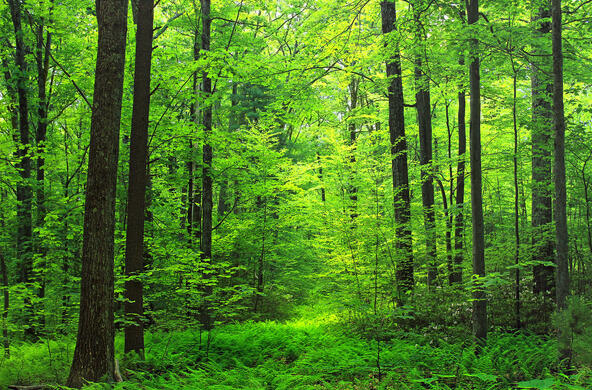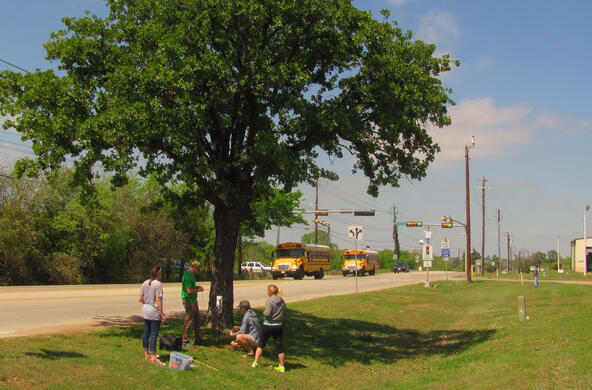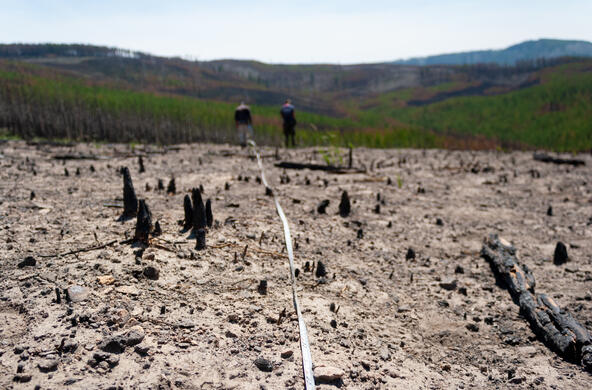If you ran a tourist agency for time-travelling, intergalactic visitors, what attractions do you think would bring aliens to Earth in 2010? As humans, I suppose we'd think our great buildings and art would attract visitors. And because ours is the blue planet, I'm sure the oceans would fascinate tourists from arid planets.
But I also think our lakes would be a big draw. We live in a time when lakes are more numerous than at nearly any other time in the Earth's history — there are 300 million ponds and lakes on the planet, ranging from little weedy ponds to inland seas such as the Great Lakes.
Why is this the age of lakes? Lakes are the children of catastrophe. Given enough time, nature will fill a lake with debris, or drain it, so we can have lakes only if something creates new basins or blocks valleys. Landslides create lakes, as do earthquakes, volcanoes and sinkholes. But the biggest manufacturers of modern lakes have been glaciers and people. The glaciers that covered the Hudson Valley — and much of Europe, Asia and North America — scoured deep basins, bulldozed earth to dam river valleys and scattered huge chunks of ice that left landscapes pocked with holes when they melted.
It is largely a result of glaciers that we live in the age of lakes. But in the last few hundreds of years, people have dug so many ponds and built so many dams that we now rival the glaciers as lake-builders. Today's abundance of lakes is only a temporary condition — many lakes have already disappeared since the glaciers began shrinking 18,000 years ago, and most of today's lakes will last for only a few thousand years more.
Three hundred million lakes, all of them a little like the ocean, yet each different from all the others — a sort of theme and variations on the ocean — entice the human (and perhaps the alien) mind. Analyzing theme and variations may be the central purpose of any intelligent mind trying to make sense of a complicated world.
A lake. A pond. An inland sea. A lake with water, brighter than air, over rippled sand. A quiet lake with bulrushes and water the color of weak tea. A pond with bulrushes and water lilies, its still surface shivered by a passing breeze. Crashing whitecaps and stinging, wind-driven sand along the shore of an inland sea. The sway of bulrushes rocked by gentle waves in a small lake.
This variation among lakes that attracts the artistic mind is also a valuable scientific tool. To see how algal production affects fish communities, we find a set of otherwise similar lakes that differ in greenness, then count fish.
If we want to know how land use affects lake productivity, we measure water clarity in lakes surrounded by different mixes of forests, farms or suburbs. Using this deliberately comparative approach, the first great centers of freshwater ecology sprang up a century ago in the lake districts of Wisconsin, Sweden and northern England, and built the foundation for modern freshwater science and management.
Even though scientists now routinely use information collected by satellites and sophisticated laboratory equipment, and analyze data with powerful computers, we still rely on the old, dependable method of contrasting different kinds of lakes with one another.
So here's the deal I can offer you, for a limited time only (the next 10,000 years). Visit the intergalactically famous Age of Lakes without having to buy an expensive rocket ticket, endure the inconveniences of time travel or suffer through a 3-million-year layover in a dingy spaceport near Alpha Centauri.
Spend a morning watching the light and wind change the complexion of a nearby lake. Or spend a week every year on a different Finger Lake so you can discuss these marvels with a visitor from Pluto. Savor the age of lakes.







